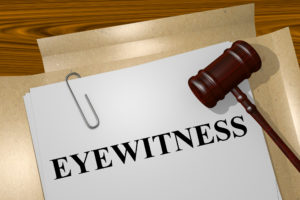
There is good reason that no criminal case should be based entirely on eyewitness testimony: It is unreliable. At Law Office of Michael L. Fell we have the expert witnesses on hand who can help poke holes in unreliable eyewitness testimony. Keep reading to learn more about it, the top five causes of misidentification, and how a criminal defense attorney can help you if you are charged with a crime in California.
Eyewitness Misidentification is a Serious Issue
Most people are likely to agree that eyewitness misidentification is a bad thing – but many believe that it is not a common issue. The truth is that there are two main issues involved in misidentification. First, a person who is innocent of the crime may be punished for it. Second, the person who is guilty of the crime is not punished or caught and is free to commit future crimes.
A witness can misidentify a suspect in a lineup, while looking at a photo array, when they see a single person at the crime scene, in a voice lineup, or when identifying a person in court. Studies have shown that misidentification happens much more often than people believe – and for a variety of reasons.
- Human Memory is Limited
- Witnesses Experience Stress and Anxiety
- Police Can Be Suggestive
- Witnesses Have Biases
- The Tendency to Focus on Weapons
No matter who the person is, it is impossible to remember everything that is seen. A person may get a glimpse of a person and their memory can fill in details they did not see or do not remember, such as their hair color, eye color, weight, or height. The person can believe with 100% certainty that they have a true memory when in fact they do not.
When a person witnesses a crime, they are understandably going to be under anxiety and stress. This can cause them to make errors in their observations, or to later make errors when recalling facts.
If the police believe they have found a guilty party, they may use techniques to present a witness with suspects that are misleading or otherwise suggestion. One example is for an officer to take an eyewitness to a lineup and then give subtle clues about who they believe the witness should chose out of the lineup.
Like it or not, most people have biases of some kind. Cross-biases, in which a person is more easily able to recognize faces of their own race, can be a big issue that leads to misidentification and eventual criminal charges.
If the crime in question involved a weapon, it is common for a witness to focus more on the weapon than on the suspect. For this reason, witnesses are often able to describe a weapon in detail even when they come up blank on the actual suspect.

